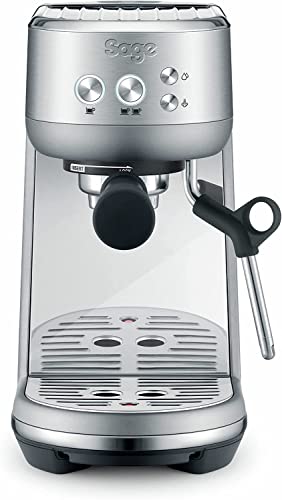How to Make Espresso Machine Coffee
An espresso machine can make a delicious cup of coffee, but it requires some more installation and maintenance than a traditional drip coffee maker. You must also grind and tamp the beans yourself.
The key to making espresso is pressure. The way an espresso machine operates is that a heating vessel heats the water to the perfect temperature, then forces it out from the spouts into the grounds.
Temperature
Espresso is created by forcing hot water under pressure through finely roasted coffee. The temperature of the water is critical to the quality of the final shot. Insufficient temperatures can result in the less extraction of the essential flavor compounds. Temperatures that are too high can result in over extraction, which may result in a bitter or burnt taste.
The ideal temperature range for espresso is between 195 and 205 degF. machine espresso is reached by using a group head that is designed to keep the same temperature and stability throughout the brewing process. The E61 is the most popular group head since it offers the ability to stabilize temperature, pre-infusion and lever control.
When adjusting the espresso machine for different roasts and brew ratios, it is important to consider the impact of temperature on the extraction yield and crema. The optimal temperature will be contingent on the particular roast and bean but the general rule is that lighter roasts and greater ratios of brews require higher temperatures than dark roasts and lower brew ratios. A good thermocouple is vital to maintain the temperature at a constant level.
Pressure
In the process of brewing espresso machine coffee is pushed through finely ground coffee grounds that have been tamped. This creates chemical reactions that extract flavors, oils and other soluble elements from the beans. The beverage that is made is usually more flavorful and richer.

The ideal espresso machine pressure should be nine bars equivalent to sea-level pressure. The soluble compounds found in the espresso bean are most effectively extracted at this pressure.
Some espresso machines advertise up to 20 bar of pressure. These machines might be able to reach these pressure levels, but they may not sustain them throughout the extraction.
One bar of pressure equals to 32 pounds per square inch (PSI) of the tire of a car. It's four times the pressure that a professional cyclist needs to pump their bike tires. The ability to control the espresso machine pressure and create consistent espressos is the key to any serious home barista.
Water
The water you use to make espresso is among the most important aspects of a great cup coffee. The right water helps your beans reach their maximum potential. However the wrong type of water could cause issues like clogging pipes, or damage to your expensive machine.
The best choice is a natural spring water that is rich in minerals for ideal espresso extraction. This water will enhance the taste of your espresso without the chalky mineral traces that are found in tap water or bottled waters. This is an excellent alternative to reverse osmosis, which could be too filtered and cause issues with flavor.
You should not use a water filtering system that removes excessive amounts of mineral content from your tap water. This can cause flavor and extraction issues. One option is to buy an instrument for testing water, that will tell you your local average water hardness. This can then be used to identify the best filtration system to provide the proper water specifications for your espresso machine.
Beans
The majority of coffee enthusiasts tend to be extremely involved throughout the process of making espresso. They obsess over a number of variables, including temperature, pressure of water beans, milk, viscosity and other factors. If one of these variables is not working, even a little the whole shot could taste bad.
The most important factor in the matter of espresso is the beans used. Many people believe that only certain types are suitable for espresso. While some beans are suitable for certain uses but any coffee bean can be used to make espresso. Espresso beans are roasted longer than regular coffee beans, tipycally over the second crack. This gives them a darker look and makes them more water-soluble.
Medium or dark roasted beans are ideal for espresso, as they impart the espresso with richness and a boldness. Light roasted beans can also be used to make fantastic espresso, particularly if they are pre-ground for convenience in an espresso maker.
Milk
Espresso and milk is a classic pairing. The combination of espresso and milk is a classic. It does not only increase energy levels but it also balances the bitterness in the espresso. There are few culinary duos better than this one!
If you decide to purchase an espresso machine that can make cappuccino or lattes take a look at how easy it is to use. The best espresso machines come with a jug of hot or cold milk and steam wand. They also come with a portafilter for pulling the shot. Certain models also come with an integrated grinder along with a tamper, frother and tamper.
To eliminate any condensed water the steam wand should be cleaned each day prior to use (or after each espresso cup). This process can take about 30 seconds and is essential to keep your machine operating smoothly. If you don't flush, it can cause bitter taste and/or accumulation of bacteria that could alter the flavor or aroma of your beverage. It's easy to do and should be part of your routine maintenance schedule.
